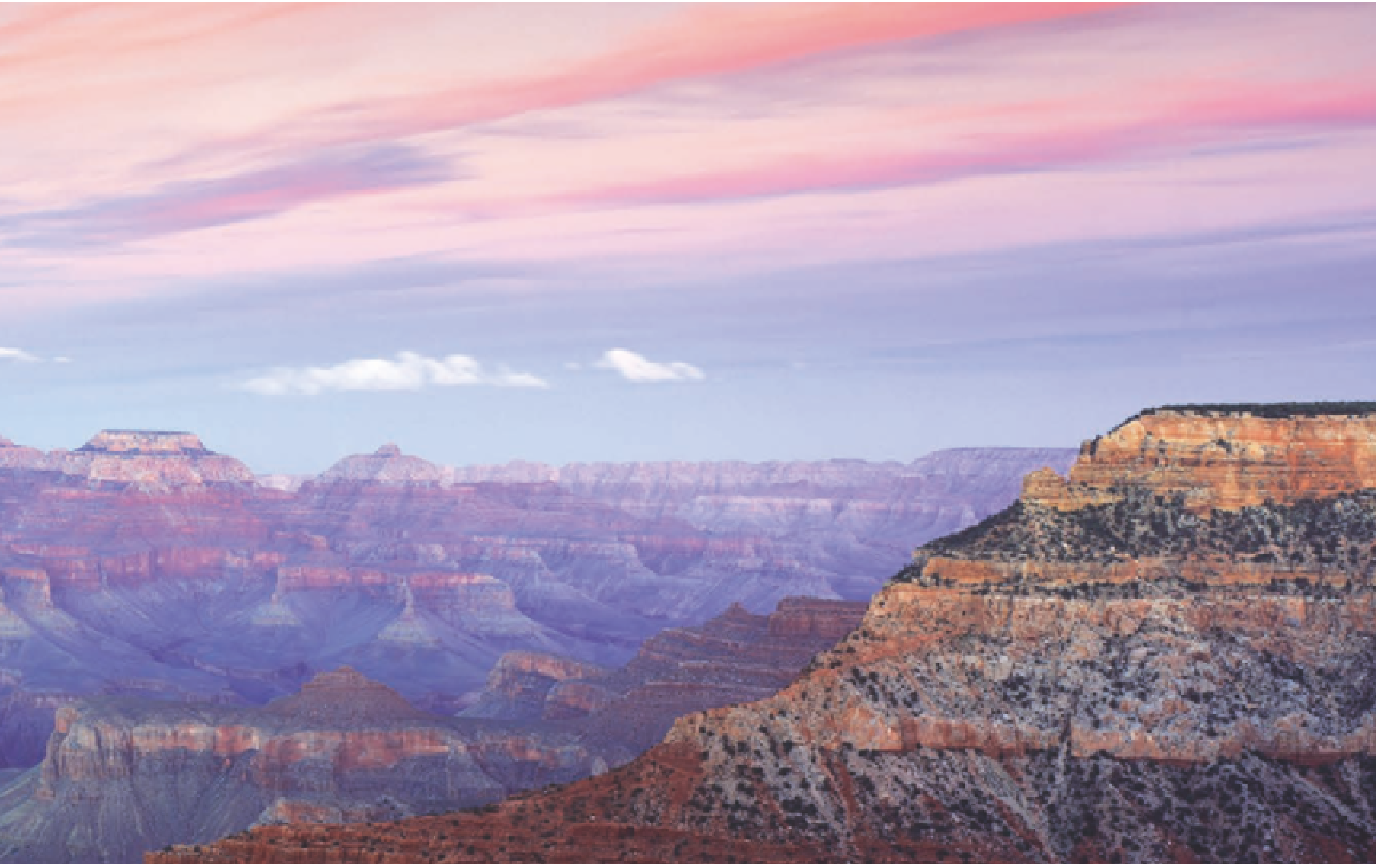Geoscience Reference
In-Depth Information
Visions of America/UIG via Getty Images
The Grand Canyon is one of the best known landscapes on Earth. In addition to being a beautiful place, the canyon is
interesting because it contains rocks that span much of the Earth's history. This chapter focuses on the geologic history
of Earth, the evolution and composition of rocks, and the character of continents and ocean basins.
L E A R n I n g O b j E C T I V E s
C H A P T E R P R E V I E W
1.
Compare and contrast the various structural layers of Earth.
2.
Explain the differences among igneous, sedimentary,
and metamorphic rocks and discuss the various kinds
of rocks that occur in each of these categories.
3.
Discuss the concept of radiometric dating and how it
is used to estimate the age of rocks.
4.
Describe the geological timescale and how it is
subdivided.
5.
Holistically explain how the evolution of landforms is
tied to the rock cycle and geologic time.
6.
Describe the general history of petroleum exploration in
the industrial period and how it may change in the future.
7.
Discuss the Anthropocene and why it may soon
become a formal epoch in the geological timescale.
Earth's Inner Structure
Rocks and Minerals in the Earth's Crust
Identification of Igneous Environments
Clastic Rocks
The Rock Cycle
Geologic Time
Geologic Time
Human Interactions with Geologic Time:
The Anthropocene















































